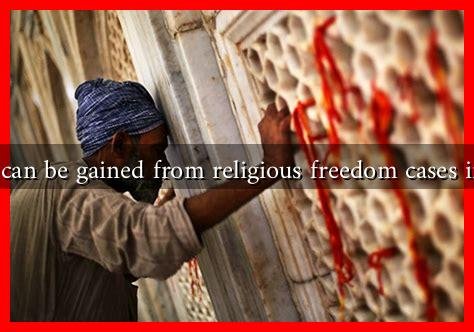-
Table of Contents
What Insights Can Be Gained from Religious Freedom Cases Involving Veils?
Religious freedom is a fundamental human right, yet its interpretation and application can vary significantly across different cultures and legal systems. One of the most contentious issues in this realm is the wearing of religious veils, such as the hijab, niqab, or burqa. These cases often highlight the tension between individual rights and societal norms, leading to important insights about the nature of religious freedom, identity, and the role of the state. This article explores the implications of various legal cases involving veils, drawing on examples from around the world.
The Legal Landscape of Religious Freedom
Religious freedom is enshrined in various international human rights instruments, including the Universal Declaration of Human Rights and the International Covenant on Civil and Political Rights. However, the application of these principles can differ widely based on local laws and cultural attitudes. In many countries, legal cases involving veils have become focal points for broader discussions about religious expression, gender rights, and secularism.
Case Studies: A Global Perspective
Several notable cases illustrate the complexities surrounding religious veils and the legal frameworks that govern them:
- France’s Burqa Ban (2010): France implemented a ban on full-face veils in public spaces, citing secularism and public safety. This law sparked widespread debate about the balance between individual rights and national identity. Critics argue that the ban disproportionately affects Muslim women and infringes on their freedom of expression.
- Canada’s Supreme Court Ruling (2015): In a landmark decision, the Supreme Court ruled that a woman could wear her niqab while testifying in court. The ruling emphasized the importance of accommodating religious practices within the legal system, reinforcing the idea that justice must be accessible to all, regardless of their religious attire.
- Germany’s School Policies (2015): In a case involving a Muslim teacher who was prohibited from wearing a headscarf in the classroom, the Federal Constitutional Court ruled that such bans could violate religious freedom. This decision underscored the need for schools to respect the religious identities of their staff while maintaining a neutral educational environment.
Insights from Religious Freedom Cases
These cases provide several key insights into the ongoing discourse surrounding religious freedom and veils:
- Intersection of Gender and Religion: Many cases highlight the intersectionality of gender and religious expression. Women often bear the brunt of legal restrictions, raising questions about autonomy and empowerment. For instance, the French ban has been criticized for undermining the agency of women who choose to wear veils as an expression of their faith.
- Secularism vs. Religious Expression: The tension between secularism and religious expression is a recurring theme. Countries like France prioritize secularism, which can lead to policies that restrict religious symbols in public life. This raises questions about the extent to which secularism should limit individual freedoms.
- Public Perception and Policy: Public opinion often shapes legal outcomes. In many cases, societal attitudes towards Islam and Muslim practices influence judicial decisions. For example, rising Islamophobia in various countries has led to stricter regulations on religious attire, reflecting broader societal fears.
The Role of Education and Awareness
Education plays a crucial role in shaping public perceptions of religious veils. Increasing awareness about the cultural and religious significance of veils can foster understanding and tolerance. Initiatives aimed at educating the public about the diversity of religious practices can help mitigate prejudice and promote inclusivity.
Conclusion: The Path Forward
Religious freedom cases involving veils reveal the complexities of balancing individual rights with societal norms. As legal systems continue to grapple with these issues, it is essential to consider the broader implications for gender equality, secularism, and cultural diversity. By fostering dialogue and understanding, societies can work towards a more inclusive approach that respects both individual freedoms and collective values.
In summary, the insights gained from these cases underscore the need for a nuanced understanding of religious freedom, particularly as it pertains to the wearing of veils. As we navigate these challenging waters, it is crucial to uphold the principles of respect, tolerance, and equality for all individuals, regardless of their religious beliefs.
For further reading on religious freedom and its implications, you can visit Human Rights Watch.

